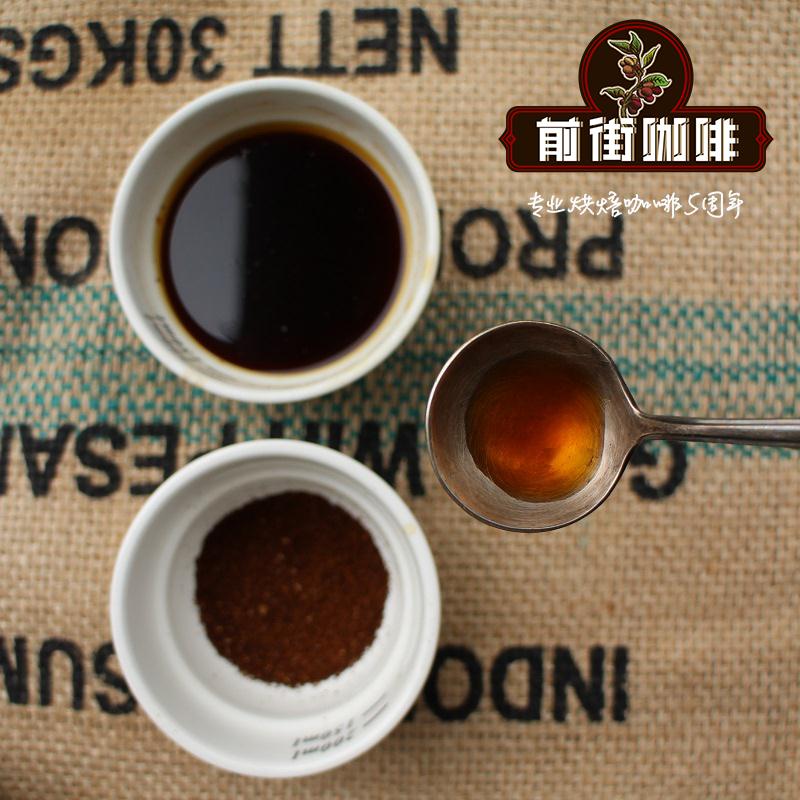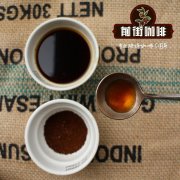36 flavor bottle dry distillation group condiments, beverage raw materials, herbal processing

Professional coffee knowledge exchange more coffee bean information please follow the coffee workshop (Wechat official account cafe_style)
Dry Distillation (dry distillation group)
(seasoning): pepper Pepper, vanilla seed CorianderSeed, clove Clove-like
(beverage raw materials): blackcurrant Black Currant-like, maple syrup MapleSyrup, malt Malt
(herbal processing): roasted coffee Roasted Coffee, cut tobacco PipeTobacco, Chinese fir Cedar
Dry Distillation dry distillation group
Pepper: pepper. Type of aroma: prednisone oil
Aroma characteristics: this is the spicy, fiery, almost metallic taste of pepper. This turpentine-like hydrocarbon essence is distilled from freshly ground black pepper. Its ingredients can be found in coffee.
The "pepper" aroma of coffee: its metallic properties are fierce and seasoned, making coffee pleasing.
Coffee tasting, which is found in many coffees, but I mainly find it in lively Brazilian coffee. I also noticed that it tastes good in Zimbabwe coffee, which is particularly good in Africa.
9 coriander seed: coriander seed. Type of fragrance: flowers-spices.
Aroma characteristics: this is dried coriander seed aromas like Mascart grapes and mahogany flowers. It tastes different from fresh parsley / coriander. The flavor is derived from linalol and the aroma of coriander seed is prominent in coffee.
The "coriander seed" aroma of coffee, which is a dominant odor, is only less significant than other major mixtures.
Coffee tasting: I find this aroma very dazzling in the nose and taste, especially in the thick, deep Ethiopian Sidam coffee. This taste is combined with the roasting flavor of the unusual Salvado Bacamara (Pacamara) coffee.
7 cloves: cloves, fragrance types: sweet spices
Fragrance characteristics: this delicious and complex smell is reminiscent of cloves, carnation, medicine cabinets, vanilla, and smoke. We chose 4-ethyl guaiacol (4-ethylguaicol) as a reference, so the taste is very strong in coffee. It is stronger than the familiar smell of eugenol (eugenol) in kitchens and dental clinics.
The "lilac" aroma of coffee: this is a wonderful but unusual aroma. This taste is praised and appreciated because of its meticulous, spicy complexity that makes the coffee deep.
Coffee tasting: I can easily detect this aroma in Burundian, fine Mexican and Guatemalan Arabian coffee, but it won't be missed in the gorgeous Ethiopian Haramoca coffee.
14 blackcurrant: blackcurrant aroma species (Aroma group): fruit, sulfur
Aroma characteristics (Aromatic features of the sample): this incredible and extremely unusual smell is emitted by the leaves of the blackcurrant bushes. It reminds you of boxwood or valerian. It has the flavor characteristics of South American balsam essential oil praised by spice merchants and brings vitality to wines made from sauvignon grapes. The aroma of blackcurrant in coffee is produced by trimercaptotrimethyl formate.
The "blackcurrant" aroma of coffee (The smell of & # 39 in coffee): this characteristic aroma brings vitality and pleasure to some of the world's most unusual coffees. It is obvious in ground coffee, whether in Robusta or Arabica coffee. It is an immutable feature of Arabica coffee liquid and can be said to play a leading role.
24 Maple syrup fragrance species: trees-spices
Aroma characteristics: this soft and very pungent smell is reminiscent of soft brown sugar and licorice. The sweetness comes from cycloten, a substance that is often found in very high-quality coffee.
Maple syrup aroma in coffee: this aroma is a great flavor enhancer because it greatly affects other flavors of coffee. Get to know it well, because it's a good indicator of coffee roasting.
Coffee tasting: this aroma is difficult to recognize through the nose, and is more evident in the taste, especially in the aftertaste. Such substances are often found in high-quality coffee, giving coffee attractive softness. It reaches its peak when mixed with the aroma of aromatic plants. It is especially outstanding in Hawaii Konas Coffee, which also enhances the slightly acidic and rich properties of Costa Rican Karakris coffee. Maple syrup is richly displayed in elegant Colombian tolimas coffee, while showing consistency and persistent aroma in outstanding Kenya. People who like Italian coffee (expresso) can also easily identify the aroma of maple syrup because it is particularly prominent.
23 types of malt aroma: baked fibers
Aroma characteristics: the charred aroma of this roasted malt is completely different from that of his raw barley grain.
Malt aroma in coffee: this aroma is lightly roasted (popular in some markets) or underbaked. This aroma is always difficult to recognize because it varies according to the degree of malt baking and coexists in harmony with other baked aromas. Need to be familiar with the taste of memory samples as a standard reference.
Coffee tasting: when the malt aroma is present in the right proportion, it is an important factor in the excellent Ethiopian de Kima, Colombian Huila San Augustus or Cauca region and elegant and pleasant Honduran coffee.
34 types of roasted coffee flavor: roasted, vulcanized
Aroma characteristics: this is the signature smell of freshly roasted coffee, which is very attractive and permeable. The main aroma of roasted coffee comes from a sulfide called furfuryl mercaptan. This compound is so powerful that it accounts for the same proportion in coffee as one minute in two centuries! Its flavor will become more intense after a period of storage after baking.
Coffee's "roasted coffee" aroma: this sexy taste comes from the roaster's logo. It gives people a soft and round feeling, and its moving smell will make you fall in love with it before you have an aftertaste.
Coffee tasting: we always wonder if this aroma is not just a decoration to make up for the lack of aroma in some coffee. Obviously, the baker may be deliberately seeking to highlight this attractive aroma to make some boring coffee more attractive. Allow yourself to indulge in the charm of this smell, which will make Salvadoran and Brazilian Arabica coffee more distinctive. It brings an extra touch of warmth to the thick, spicy Ethiopian coffee and adds a touch of vitality to the rare, delicious and floral Java coffee.
33 pipe tobacco flavor, aroma type: baking
Aroma characteristics: this is the aroma of burning tobacco leaves, which is reminiscent of the crackling sound of burning fallen leaves in autumn.
The "pipe tobacco" aroma of coffee: this flavor undoubtedly comes from baking, which is typical of Brazilian Arabica coffee, often mixed with dried vegetables and roasted aromas.
Coffee tasting: I found this elegant quality in Kenyan AA coffee (the taste reminds me of burnt cigars when it first rests on my upper jaw). The flavor is lighter in Kiwu coffee in Zaire and mixed with the spray smell of Haitian coffee. In fact, it covers a variety of flavors: Jamaican Blue Mountain Coffee gives off a hint of tobacco, while Hawaiian Konas Coffee has a more persistent cigar smell.
Cunninghamia lanceolata: fragrance species: Wood
Fragrance characteristics: this is the lovely, fresh, pastoral smell of raw wood and sharpening pencils. This sample is the natural essential oil of Atlas cedar.
Cunninghamia lanceolata aroma of coffee: this delicate aroma is the hallmark of some purebred / first-class coffee in the world. It does not dominate other flavors, but it is exquisitely combined with other flavors and elegantly mixed to form a so-called "bouquet". This flavor is more pronounced in mature harvest coffee.
Coffee tasting: allow me to describe this taste like Lafite. Rothschild's top red wine (Chateau Lafite Rothschild) this cedar aroma in coffee is as strong and precious as it is in red wine. I found it in thick-scented Drugar and Bugisu coffee and Limu coffee in Ethiopia. This taste is incredibly delicate in good Guatemalan beans, and it appears in the background in Honduras beans. In the legendary Jamaican Blue Mountain Coffee, it is absolutely eye-catching, but I think this gorgeous interpretation, like the well-dressed king, is Hawaii Icona kona Coffee.
END
Important Notice :
前街咖啡 FrontStreet Coffee has moved to new addredd:
FrontStreet Coffee Address: 315,Donghua East Road,GuangZhou
Tel:020 38364473
- Prev

36 flavor bottle caramel group nuts, desserts, toast and fresh butter
Professional coffee knowledge exchange more coffee bean information please follow the coffee workshop (Wechat official account cafe_style) Sugar Browning (caramel group) (four nuts): roasted almond Roasted Almonds, roasted peanut RoastedPeanuts, roasted hazelnut Roaster Hazelnuts, walnut Walnuts (three desserts): caramel Caramel, dark chocolate BlackChocolate,
- Next

100 flavor coffee nose smell bottle 100 flavor tea smell bottle coffee taste cup test
Professional coffee knowledge exchange more coffee bean information please follow coffee workshop (Wechat official account cafe_style) 1, guava guava 2, mangosteen mangosteen 3, mango mango 4, banana banana 5, coconut coconut 6, passion fruit passionfruit 7, watermelon watermelon 8, papaya papaya 9, tropical fruit tropical fruit 10
Related
- How did the Salvadoran coffee industry develop in Central America?
- What exactly does the golden cup extraction of coffee mean?
- The Origin of Coffee flower
- [2023 Starbucks World Earth Day] there are more meaningful things besides free Starbucks coffee!
- What kind of coffee is there in Spain? 9 Flavors of Spanish Coffee
- Aromatic African coffee| Kenya's coffee culture and historical production area
- Liberica Coffee Bean knowledge: the characteristics of Liberian Coffee beans of the three original species of Coffee beans
- The origin and formula of Spanish latte introduces the taste characteristics of Bombon coffee in Valencia, Spain.
- How to adjust the solution of over-extracted coffee
- What is the tasting period of coffee beans? What is the period of coffee and beans? How should coffee wake up and raise beans?

